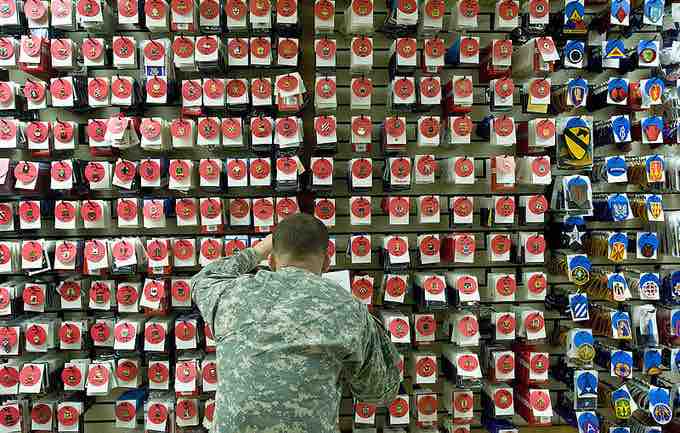FIFO, LIFO, and average cost methods are accounting techniques used in managing inventory involving the amount of money a company has tied up within inventory of produced goods, raw materials, parts, components. These methods are used to manage assumptions of cost flows related to inventory.

Inventory
Inventories U.S. Army unit badges from a wall of military uniform items
FIFO
FIFO stands for first-in, first-out, meaning that the oldest inventory items are recorded as sold first but do not necessarily mean that the exact oldest physical object has been tracked and sold. This expression describes the principle of a queue processing technique or servicing conflicting demands by ordering process by first come, first served (FCFS) behavior, where the persons leave the queue in the order they arrive, or waiting one's turn at a traffic control signal.
LIFO
LIFO stands for last-in, first-out, meaning that the most recently produced items are recorded as sold first. Since the 1970s, some U.S. companies shifted towards the use of LIFO, which reduces their income taxes in times of inflation, but with International Financial Reporting Standards banning the use of LIFO, more companies have gone back to FIFO. LIFO is only used in Japan and the United States,
LIFO Reserve
The difference between the cost of an inventory calculated under the FIFO and LIFO methods is called the LIFO reserve. This reserve is essentially the amount by which an entity's taxable income has been deferred by using the LIFO method.
Average Cost
Average cost method is quite straightforward. It takes the weighted average of all units available for sale during the accounting period and then uses that average cost to determine the value of COGS and ending inventory. There are two commonly used average cost methods: Simple weighted average cost method and moving average cost method.
Weighted average cost method:
It takes Cost of Goods Available for Sale and divides it by the total amount of goods from Beginning Inventory and Purchases. This gives a Weighted Average Cost per Unit. A physical count is then performed on the ending inventory to determine the amount of goods left. Finally, this amount is multiplied by Weighted Average Cost per Unit to give an estimate of ending inventory cost.
Moving average cost method:
Assume that both Beginning Inventory and beginning inventory cost are known. From them the Cost per Unit of Beginning Inventory can be calculated. During the year, multiple purchases are made. Each time, purchase costs are added to beginning inventory cost to get Cost of Current Inventory. Similarly, the number of units bought is added to beginning inventory to get Current Goods Available for Sale. After each purchase, Cost of Current Inventory is divided by Current Goods Available for Sale to get Current Cost per Unit on Goods. Also during the year, multiple sales happen. The Current Goods Available for Sale is deducted by the amount of goods sold, and the Cost of Current Inventory is deducted by the amount of goods sold times the latest (before this sale) Current Cost per Unit on Goods. This deducted amount is added to Cost of Goods Sold. At the end of the year, the last Cost per Unit on Goods, along with a physical count, is used to determine ending inventory cost.